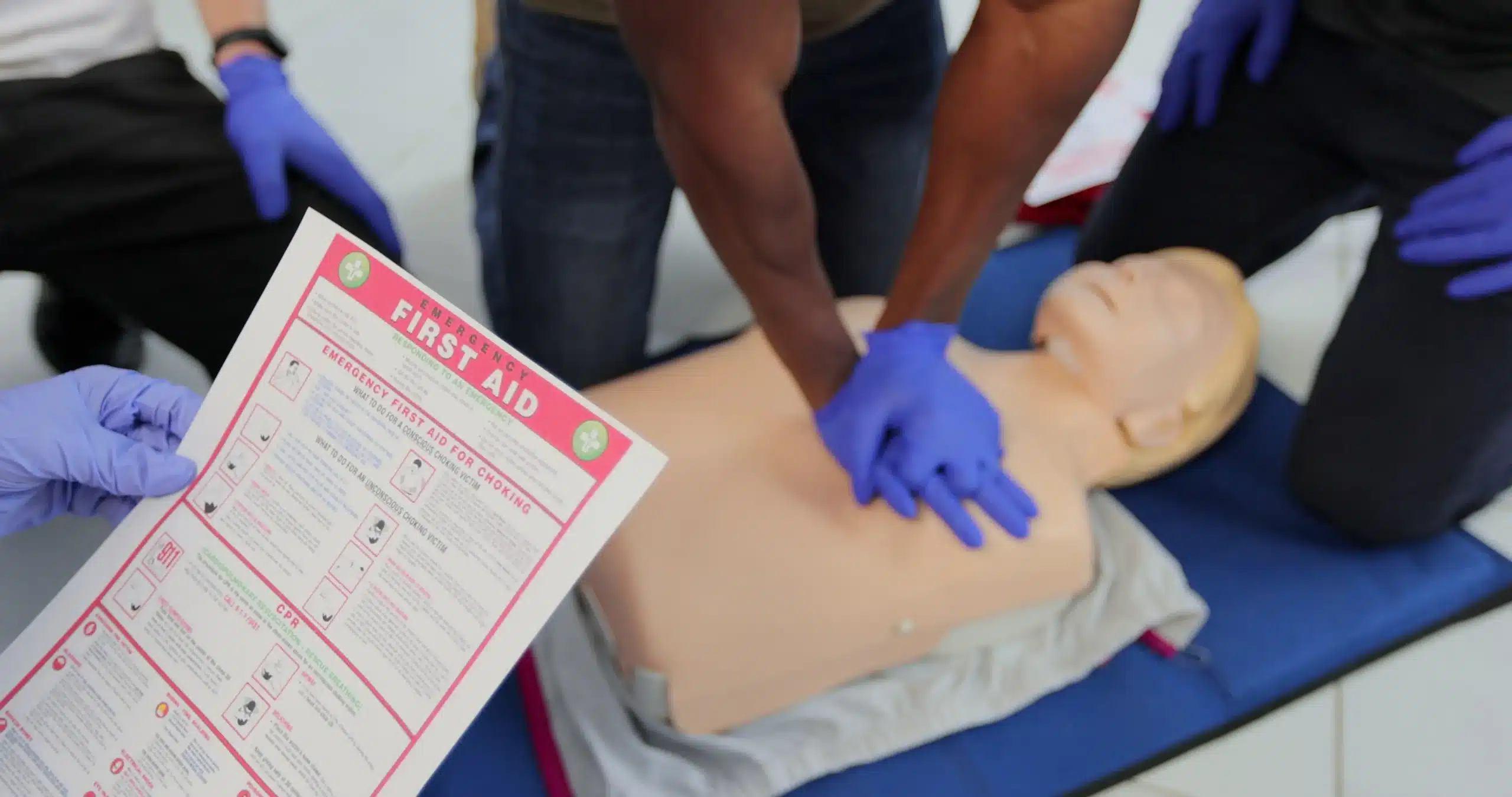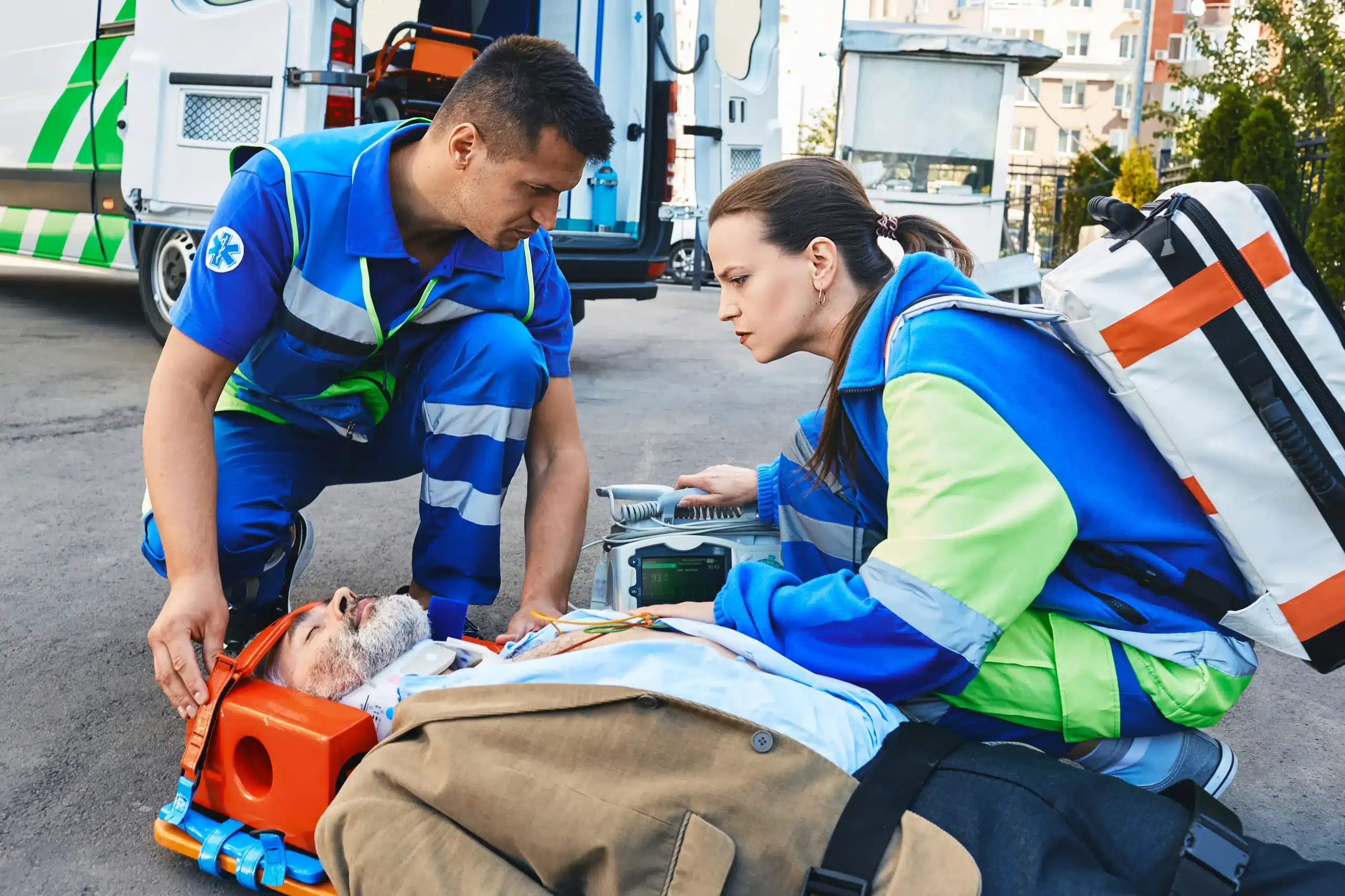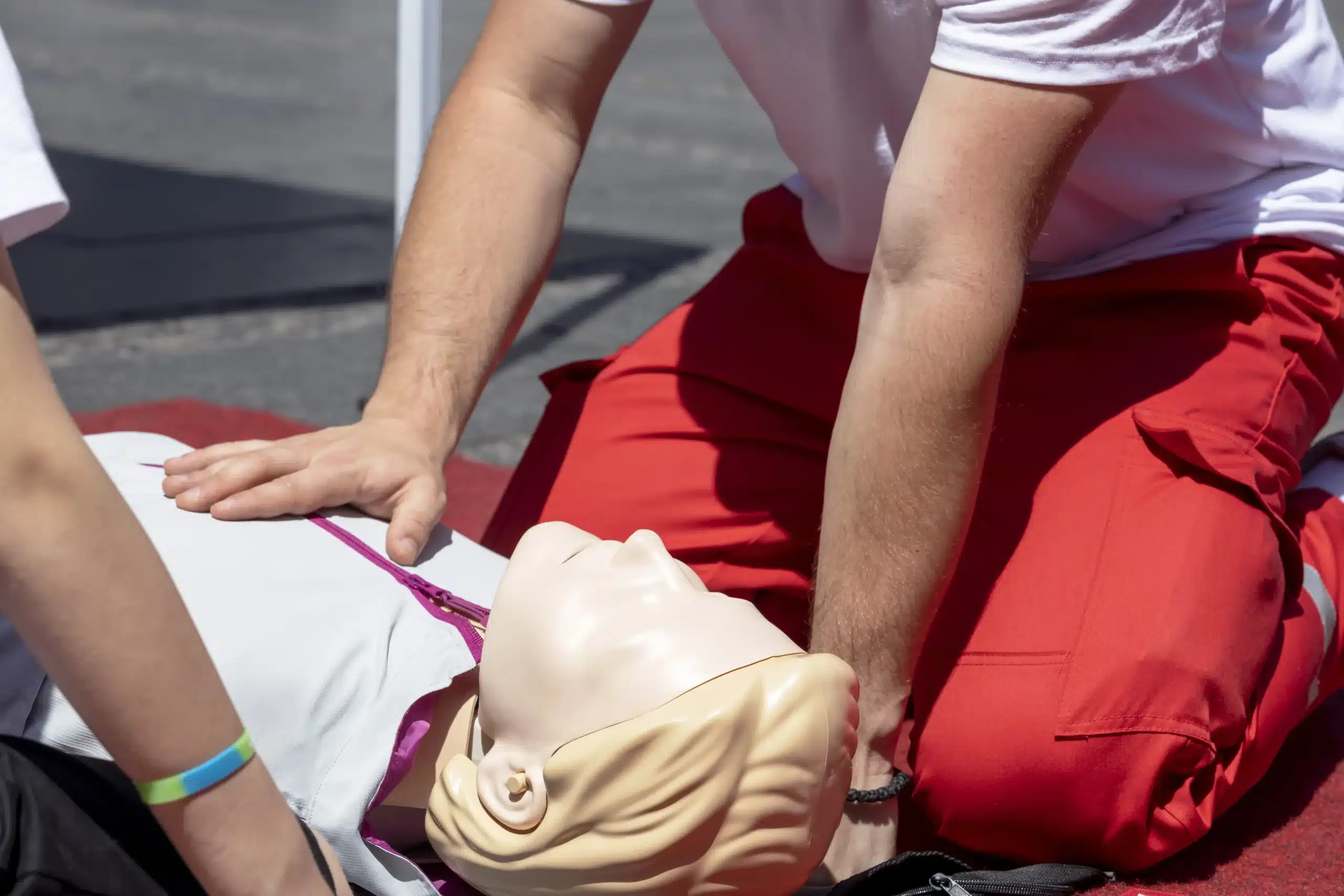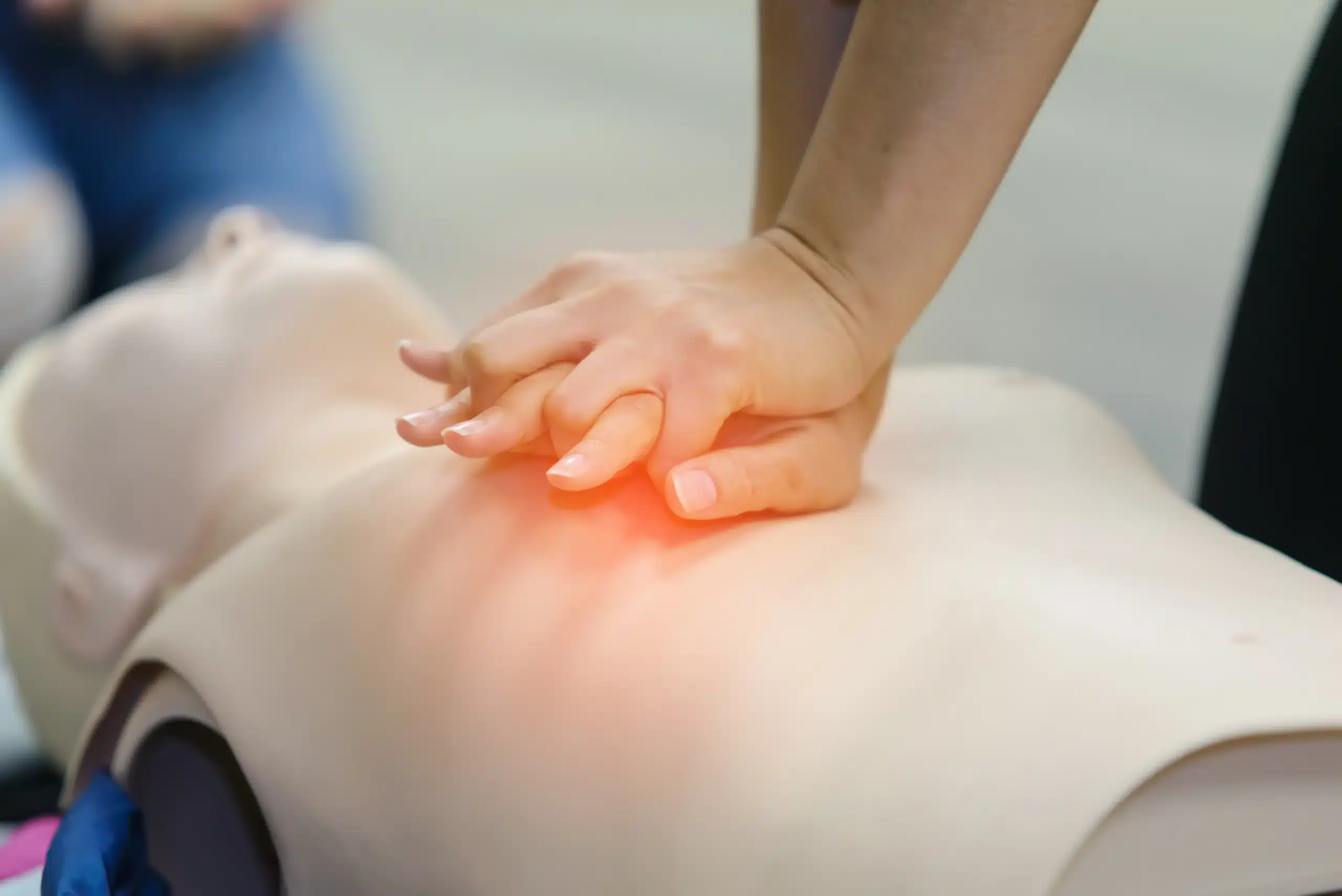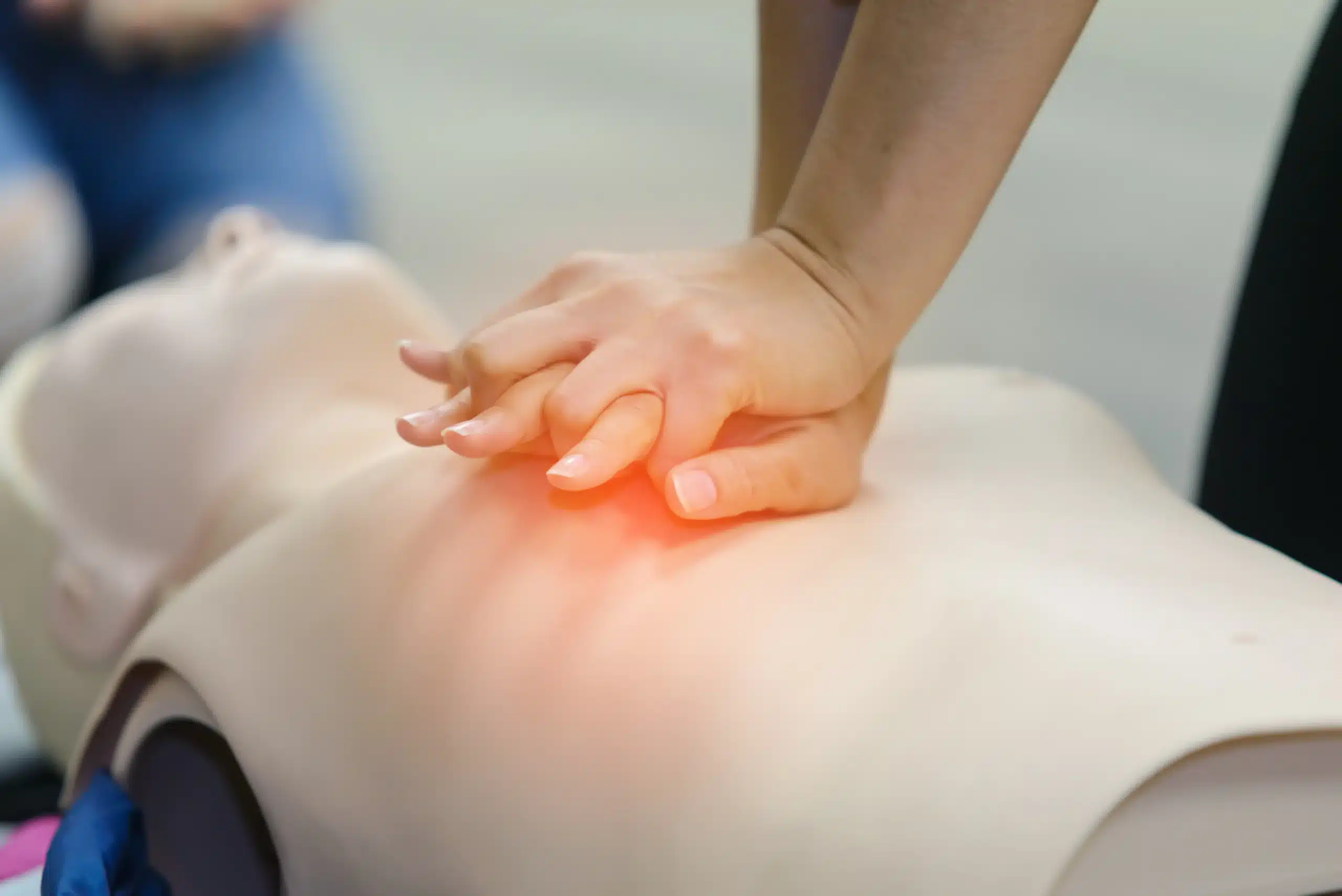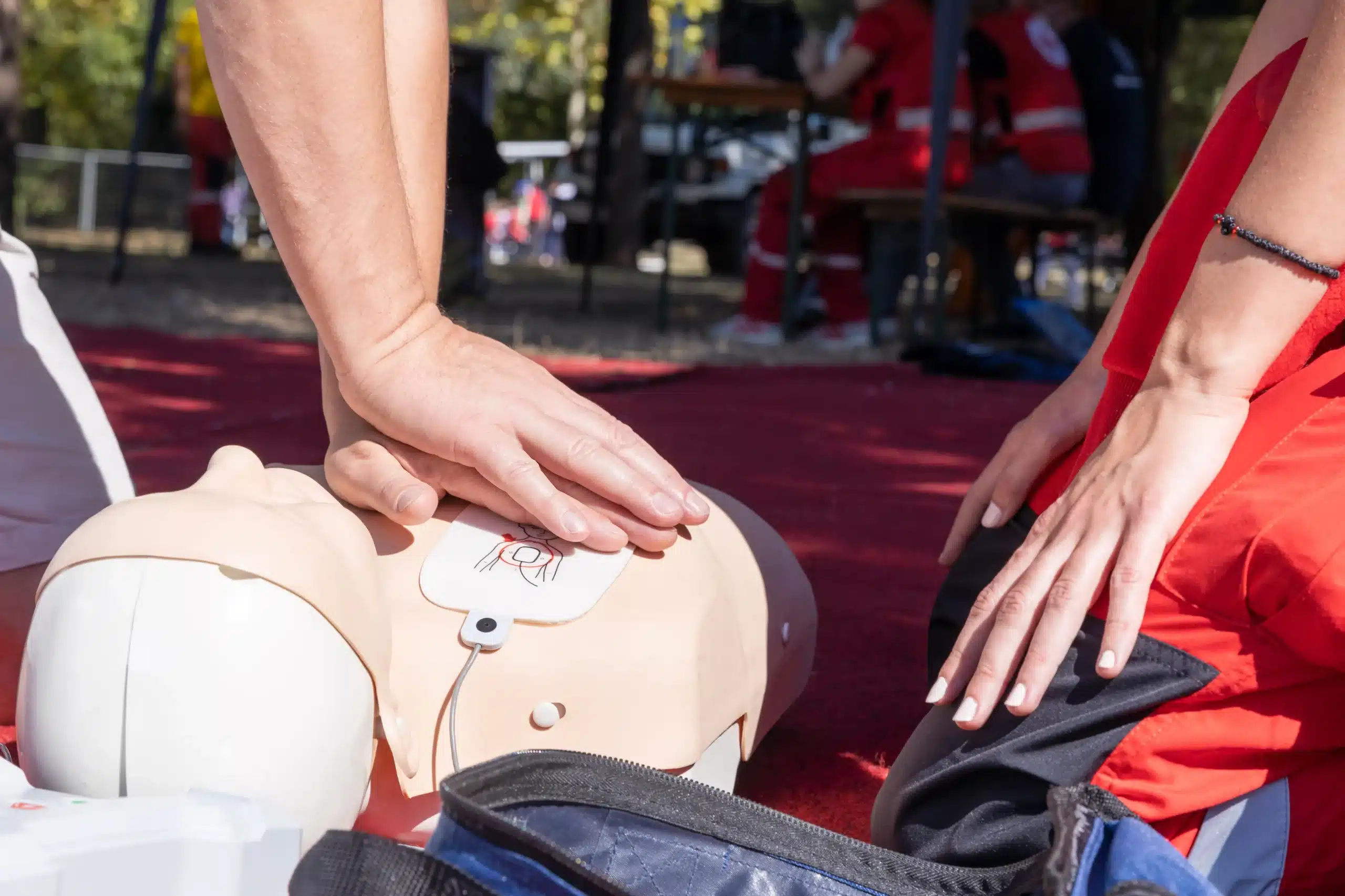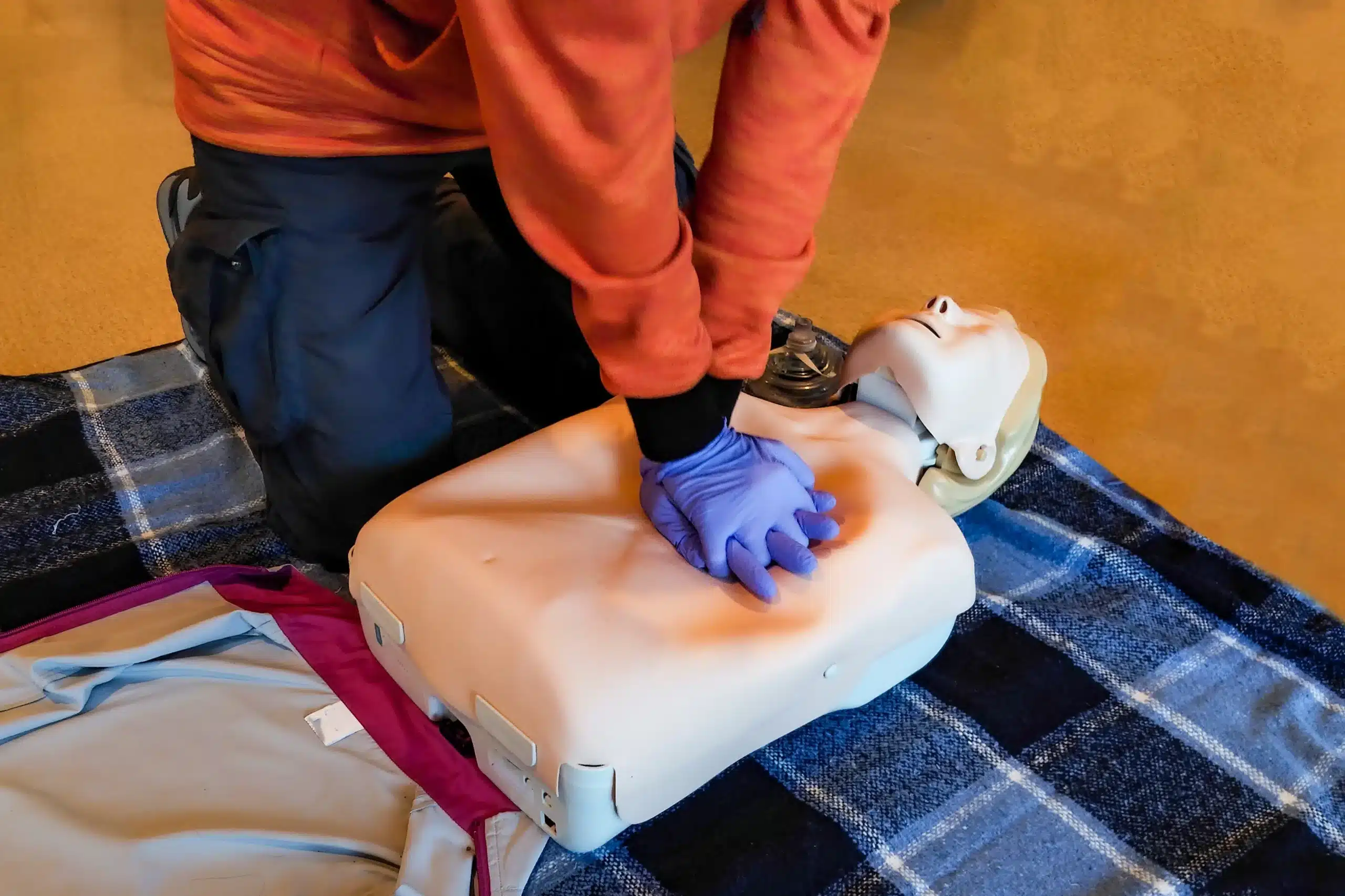Life throws curveballs. Accidents happen. Being prepared for medical emergencies isn’t about living in fear; it’s about having the confidence to act when it matters most. This guide explores the world of CPR and first-aid in Menlo Park, offering a practical roadmap for finding the right training program for you. We’ll cover the various types of courses available, discuss certification options, and compare local training providers like Safety Training Seminars, Menlo Fire CERT, and In-Home CPR. Whether you’re a healthcare professional, a parent, or simply someone who wants to be prepared, this guide will help you find the resources you need.
Key Takeaways
- Find the right CPR and First Aid training for your needs: Explore options ranging from basic life support to advanced certifications like BLS, ACLS, and PALS. Consider factors like your current skill level and professional requirements.
- Choose a course that fits your lifestyle: Balance factors like cost, schedule, and learning preferences (online, in-person, or blended learning). Look for providers offering group discounts or flexible class times.
- Take advantage of local resources in Menlo Park: Several organizations offer CPR and First Aid training, including Safety Training Seminars, Menlo Fire CERT, and In-Home CPR. Research different providers to find the best match for your needs.
What is CPR and First Aid Training in Menlo Park?
CPR and First Aid training gives you the skills to handle medical emergencies. These courses teach how to provide immediate care until professional help arrives, covering everything from minor injuries to life-saving techniques like CPR. Think of it as your personal toolkit for responding effectively to accidents and sudden illnesses. Several organizations offer these essential courses in Menlo Park, ensuring residents have access to high-quality training. Menlo Fire CERT is one local option, focusing on preparing citizens for various medical emergencies.
Beyond general CPR and First Aid, you can also find specialized training in Menlo Park and throughout Northern California. These advanced courses, such as Basic Life Support (BLS), Advanced Cardiovascular Life Support (ACLS), and Pediatric Advanced Life Support (PALS), provide in-depth instruction for specific situations. Safety Training Seminars offers a range of these certification classes, taught by certified instructors. For a more personalized approach, In-Home CPR brings the training to your home or business. If flexibility is key, ProTrainings provides online courses accessible from any device, with a blended learning option that includes remote skills evaluation. With so many choices, finding the right training program to fit your needs is straightforward.
Find the Right CPR and First Aid Program
Finding the right CPR and First Aid program involves understanding the different types of courses, various certification options, and who can benefit from this training. Let’s break down these aspects to help you make an informed decision.
Explore Course Types
CPR and First Aid training programs cater to a wide range of needs, from basic life support skills for community members to advanced certifications for healthcare professionals. Basic CPR and First Aid courses cover essential techniques like chest compressions, rescue breaths, and how to manage common injuries. More specialized training, such as BLS for healthcare providers, ACLS, and PALS, covers advanced life-saving procedures. Safety Training Seminars offers a variety of these courses to meet your specific requirements. Consider your current skill level and professional needs when selecting a course type.
Review Certification Options
Most CPR and First Aid courses offer certification upon successful completion, typically valid for two years. Common certifying bodies include the American Heart Association, the American Red Cross, and ASHI. It’s important to verify the specific certification offered by each program and ensure it aligns with your professional requirements. For healthcare providers, an AHA-certified course, like those offered through our RQI program, is often necessary. Some providers also offer fully online courses for those who prefer flexible learning.
Who Should Take These Courses?
While healthcare professionals often require CPR and First Aid certification, these skills are valuable for everyone. Parents, caregivers, teachers, coaches, and those in any workplace can benefit from knowing how to respond to emergencies. Consider taking a CPR and First Aid class, especially if you have children, frequently interact with vulnerable populations, or work in a setting where medical emergencies could occur. These courses empower you to act confidently and potentially save lives. Safety Training Seminars offers group discounts for businesses or community groups interested in training together.
Costs, Schedules, and Locations
Finding the right CPR and first aid class involves more than just the curriculum. You also need to consider practical matters like cost, scheduling, and location. Fortunately, Menlo Park offers a variety of options to fit your needs.
Compare Course Prices
CPR and first aid training costs in Menlo Park can differ depending on the provider and the specific course. Basic CPR training is often more budget-friendly than advanced courses like ACLS or PALS, which cover more comprehensive material. Take some time to compare prices from different providers before committing to a class. Our low price guarantee ensures you’re getting the best value.
Get Group Discounts
If you’re training a team or group, look for providers offering group discounts. Many CPR training organizations in Menlo Park offer reduced rates for businesses, community groups, or families signing up together. This can be a smart way to equip your entire team with life-saving skills affordably. Check out our group discounts for more information.
Find Class Times and Places
CPR class schedules vary, but many providers offer regular weekend or evening sessions to accommodate busy schedules. Some organizations, like Safety Training Seminars, offer classes in over 60 cities, providing flexibility. Check with specific providers like Menlo Fire Cert, Bay Area CPR, or In Home CPR for their most up-to-date schedules and locations. You can also find convenient RQI classes through our program, designed to fit seamlessly into your schedule. We offer BLS certification through the American Heart Association.
Certification: Benefits and Requirements
Getting certified in CPR and First Aid is a valuable asset, but understanding the different certifications, renewal processes, and overall benefits can feel overwhelming. Let’s break it down so you can make informed decisions about your training.
Available Certifications
Finding the right certification is the first step. In Menlo Park, you’ll find several reputable organizations offering CPR and First Aid certifications. Safety Training Seminars, for example, offers a comprehensive range of courses, including CPR, BLS, ACLS, PALS, and NRP certification. They work with individuals and businesses throughout Northern California. For those who prefer training in their own space, In-Home CPR provides CPR, First Aid, and BLS certification classes at your home or office in Menlo Park and the surrounding areas. This offers a convenient alternative to traditional classroom settings.
Renew Your Certification
CPR and First Aid certifications, like those from ASHI and the American Red Cross, are typically valid for two years. Staying current with your certification is essential for maintaining your skills and ensuring you’re prepared to respond effectively in an emergency. Review the requirements for your chosen certification and mark your calendar for renewal to avoid any lapses in your qualifications.
Why Get Certified?
Getting certified isn’t just about checking a box; it’s about equipping yourself with life-saving skills. These programs focus on community preparedness and empower individuals to act confidently during emergencies. CPR and First Aid certification provides the knowledge and practical training needed to respond effectively, potentially making a critical difference in someone’s life. Whether you’re a healthcare professional, a childcare provider, or simply someone who wants to be prepared, certification gives you the tools and confidence to act when it matters most. Learn more about the importance of community preparedness and CPR training from Menlo Fire CERT.
Online or In-Person Training?
Deciding between online and in-person CPR and first aid training depends on your learning style, schedule, and budget. Both options offer distinct advantages, and increasingly, blended learning models combine the best of both worlds. Let’s look at the pros and cons to help you decide what’s right for you.
Advantages of Online Courses
Online courses offer unparalleled flexibility. Learn at your own pace, fitting the training around your schedule. ProTrainings, for example, offers entirely online courses accessible from any device. This on-demand access makes online learning perfect for busy professionals, parents, or anyone with a packed schedule. Plus, online courses are often more affordable, with providers like ProTrainings offering options ranging from $39.95 to $59.95. This makes acquiring these essential life skills accessible to more people.
Benefits of In-Person Training
In-person training provides a valuable opportunity for hands-on learning and direct interaction with experienced instructors. Companies like In Home CPR staff their courses with EMTs, paramedics, and registered nurses who bring real-world medical experience to the classroom. This face-to-face instruction allows for immediate feedback, personalized guidance, and the chance to ask questions and practice skills in a supportive environment. The structured schedule of in-person classes, often available seven days a week, including evenings, can help keep students on track.
Explore Hybrid Learning
For those seeking a balance between flexibility and hands-on practice, hybrid learning offers an ideal solution. This approach combines online learning with the benefits of in-person skills sessions. In Home CPR and ProTrainings both offer blended learning options. ProTrainings, for instance, provides a hands-on skills evaluation done remotely via Zoom using a provided manikin kit. This allows students to complete the coursework online at their convenience and then demonstrate their skills under the guidance of a qualified instructor.
Choose the Best CPR and First Aid Course
So, you’re ready to learn CPR and first aid—that’s fantastic! Choosing the right course can feel overwhelming with so many options, but it doesn’t have to be. Let’s break down how to find the perfect fit for you.
Factors to Consider
First, think about what you need from a CPR and first aid class. A good starting point is checking the credentials of the instructors and the training organization. Look for classes taught by certified instructors affiliated with a nationally recognized organization like the American Heart Association. For example, our courses at Safety Training Seminars are led by AHA-certified instructors and offer the RQI program for convenient skills maintenance. This ensures you receive top-notch training that meets industry standards. If you’re looking for training in Menlo Park, we offer various CPR, BLS, ACLS, PALS, and NRP certification classes throughout the area and across Northern California. Also, if you’re signing up a team, ask about group discounts—it can make training more affordable. We understand budget is a factor, so we offer a low price guarantee.
Match Courses to Your Needs
Not all CPR and first aid courses are the same. Some cover the basics, while others are designed for specific professions. Think about why you’re taking the course. Are you a healthcare provider needing to renew your BLS certification? Or are you a parent wanting to learn basic life support skills for emergencies at home? Matching the course content to your needs will make the training more relevant and effective. For instance, healthcare providers often require ACLS certification, which covers advanced life support techniques. Make sure the course you choose aligns with your current skill level and professional requirements. If you’re unsure which course is right for you, reach out to a training provider like Safety Training Seminars. We’re happy to help you find the best fit.
Prepare for Training
Once you’ve chosen a course, a little prep work can go a long way. Check the class schedule and choose a time that works for you. Many providers offer classes on weekends and evenings to accommodate busy schedules. Browse the course description so you know what to expect. Some courses may require pre-course reading or online modules. Knowing this ahead of time helps you feel prepared and confident on the day of your training. And don’t forget the practical stuff: comfortable clothing, a notebook and pen (if allowed), and a water bottle are always good ideas. By taking these simple steps, you’ll be set up for a successful and rewarding learning experience.
Local CPR and First Aid Training Providers
Finding the right CPR and first aid training in Menlo Park depends on your specific needs and schedule. Here’s a rundown of local providers to help you get started:
Safety Training Seminars
Safety Training Seminars offers a range of CPR, BLS, ACLS, PALS, and NRP certification courses throughout Northern California, including Menlo Park. They are also licensed to teach pediatric CPR and first aid to California childcare providers, making them a convenient option for those working in childcare settings.
Menlo Fire CERT
The Menlo Fire Community Emergency Response Team (CERT) provides CPR and first aid training designed for community members. Their seven-hour program, held monthly, focuses on giving citizens the skills to handle medical emergencies until professional help arrives.
In-Home CPR
For a more personalized approach, In-Home CPR brings the training to you. They offer CPR, first aid, and BLS certification classes in Menlo Park and nearby areas, teaching at your home or business. With no minimum student requirement and instructors who are experienced EMTs, paramedics, and RNs, this option offers flexibility and real-world expertise.
American Red Cross
The American Red Cross is a nationally recognized provider of CPR and first aid courses, with both in-person and blended learning options. Their certifications are widely accepted and generally valid for two years. Check their website for course offerings and schedules in Menlo Park.
American Heart Association
Many organizations offer training, but courses taught by American Heart Association-certified instructors often lead to AHA certifications, which are widely recognized and valid for two years. Look for providers in Menlo Park offering AHA-aligned courses. For example, Safety Training Seminars offers American Heart Association BLS certification.
Community Centers and Hospitals
Local community centers and hospitals sometimes offer CPR and first aid classes. Contact these facilities directly to inquire about upcoming courses, as availability can vary. While fire departments are another potential resource, their class offerings can be inconsistent.
Related Articles
- First Aid Training in Menlo Park: A Practical Guide – Palo Alto CPR Classes
- CPR Training in Menlo Park: Your Complete Guide – Palo Alto CPR Classes
- CPR Certification in Menlo Park: Your Guide – Palo Alto CPR Classes
- Online CPR Classes in Menlo Park: Your Guide – Palo Alto CPR Classes
- Prioritize Workplace CPR and First-Aid Training for Safety
Frequently Asked Questions
What’s the difference between CPR and First Aid?
CPR, or Cardiopulmonary Resuscitation, focuses on restoring breathing and circulation in someone who’s unresponsive and not breathing normally. First Aid addresses a broader range of injuries and illnesses, from minor cuts and burns to more serious situations like choking or allergic reactions. Think of CPR as a specific technique within the wider scope of First Aid.
How do I choose the right CPR and First Aid class?
Consider your specific needs and goals. Are you looking for basic life support skills for everyday emergencies, or do you need professional certification for your job? Think about your learning style too. Do you prefer online learning, in-person instruction, or a combination of both? Finally, compare costs and schedules to find a class that fits your budget and availability.
What types of CPR and First Aid certifications are available?
Several organizations offer CPR and First Aid certifications, including the American Heart Association, the American Red Cross, and ASHI. Look for certifications accepted in your workplace or field. For healthcare professionals, American Heart Association certifications are often required. Make sure any certification you choose aligns with your specific professional needs.
How often do I need to renew my CPR and First Aid certification?
Most CPR and First Aid certifications are valid for two years. Check with your certifying organization for specific renewal requirements. Staying current with your certification ensures your skills are up-to-date and you’re prepared to respond effectively in an emergency.
Where can I find CPR and First Aid training in Menlo Park?
Several organizations offer CPR and First Aid training in Menlo Park and the surrounding areas. Check with local hospitals, community centers, and specialized training providers like Safety Training Seminars, Menlo Fire CERT, and In-Home CPR. Many providers offer flexible scheduling options, including weekend and evening classes, to accommodate busy schedules. You can also find online and blended learning options for added convenience.
